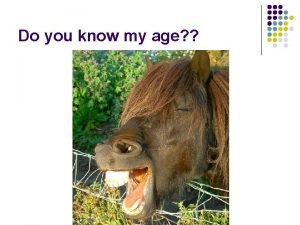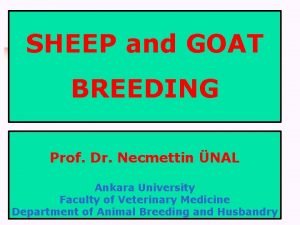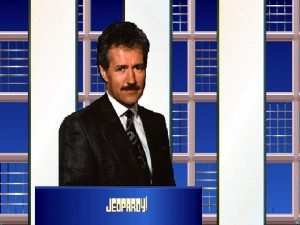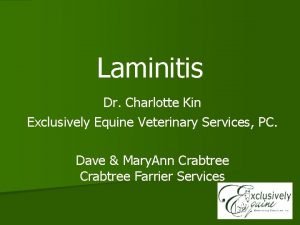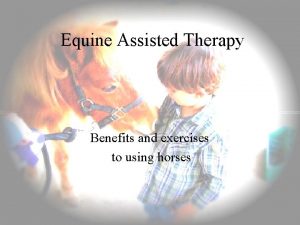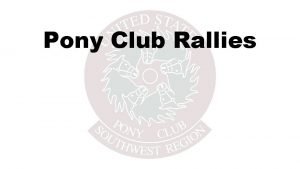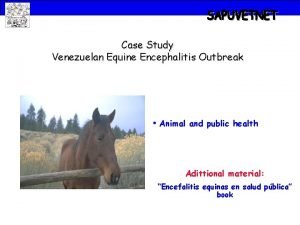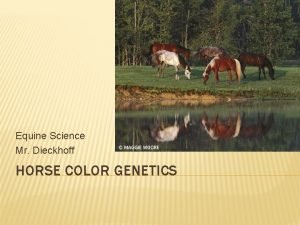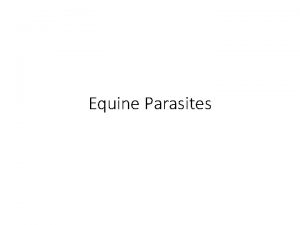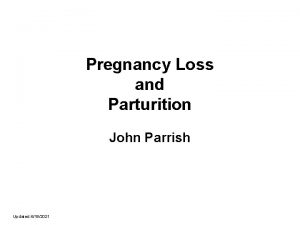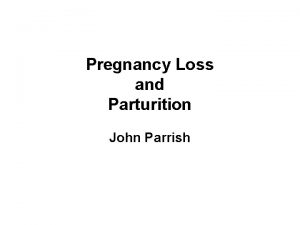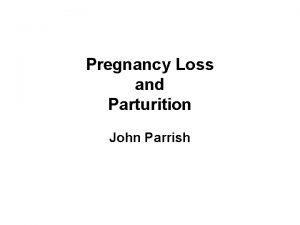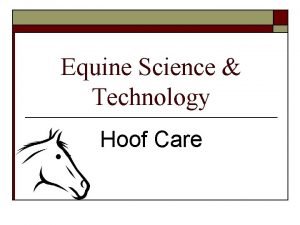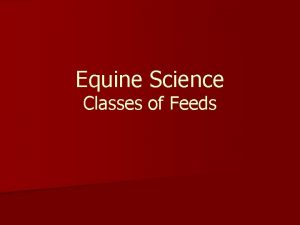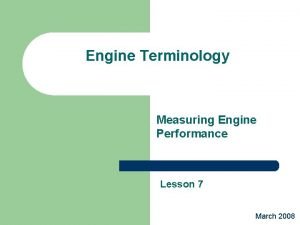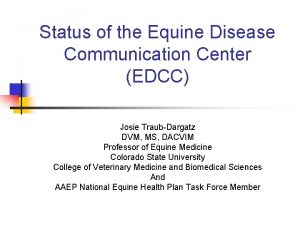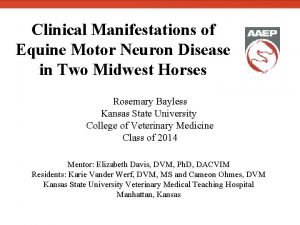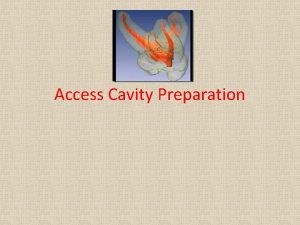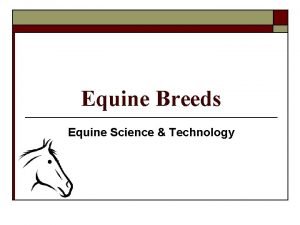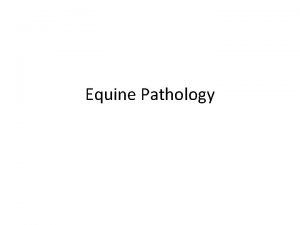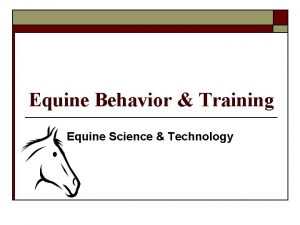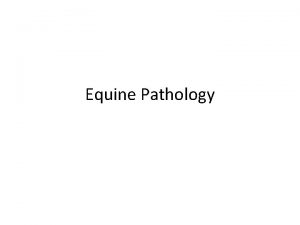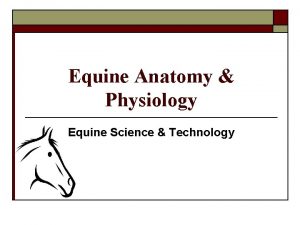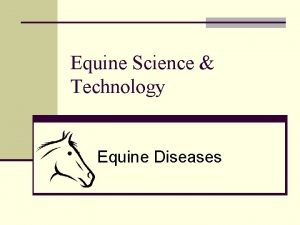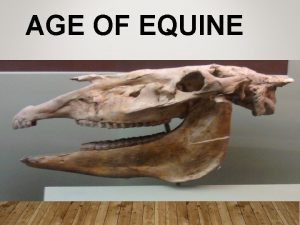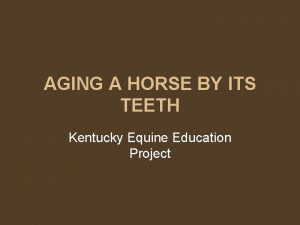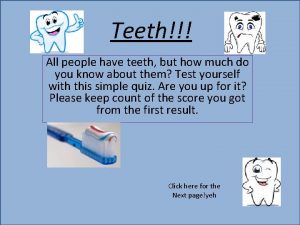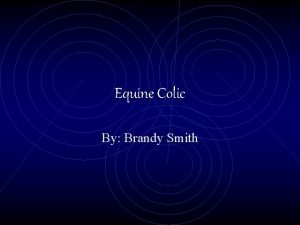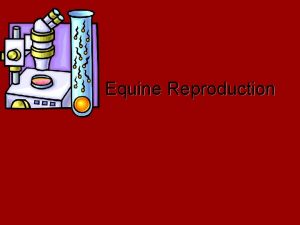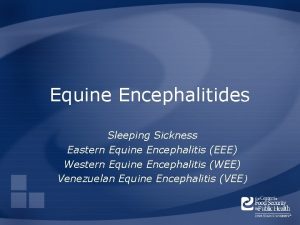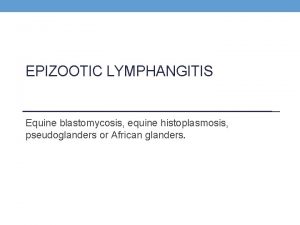Age of Equine Its All in the Teeth


























- Slides: 26

Age of Equine It’s All in the Teeth


Determining Age • Age affects usefulness and value • Type, number and appearance of incisor teeth help determine correct age – 5 years or less – some combination range from all milk teeth (temporary teeth) to all permanent incisors – 6 to 12 years – number of cups (indentations) in permanent incisor teeth – 12 years & over – examine cross section and slant of incisor teeth

Types of Teeth • Adult horses typically have 36 -44 teeth – 12 Incisors – 12 Pre-molars – 12 Molars • May have – Canines (4) – Wolf teeth (2) (6 upper and 6 lower)

The Numbers Make the Difference • Immature horses – Total 24 temporary teeth • Stallions & Geldings – 40 -44 permanents – Most have 4 canines • Mares – Total 36 -38 permanent teeth – Mares are less likely to have canines


Types of Teeth: • Temporary Teeth – small, white, oval shaped; wider side to side than front to rear • Permanent Teeth – yellow, larger than temporaries with a general round surface • Molars – used for grinding on each side • Incisors – used for cutting

What’s the Difference • 3 sets of incisors – Centrals, Middle, Corner Incisors – 12 Incisors: • 6 upper & 6 lower • Incisors have a cup or indentation in center of tooth that wears down with age and ultimately disappears

What’s the Difference • Pre-molars and Molars – 12 pre-molars – 12 molars – Often called cheek or jaw teeth – Used for grinding food

Wolf Teeth • Wolf teeth are similar to our wisdom teeth – Some horses have them, others don’t – Some have to be removed, others don’t – No functional purpose today • Residual “appendage” from past • “Wolf” used to mean “bad” – appears in front of upper molars


• As the horse ages: – Teeth are worn down (height) – Change shape (oval to triangle) – Cup is worn away

The Breakdown 1 year – All temporary incisors present / Cups gone from centrals 2 year - All temporary incisors present / cups gone 3 year - Temporary central incisors replaced with permanent central incisors

• 4 years - Temporary intermediate incisors replaced with permanent intermediate incisors • 5 years – All temporary incisors replaced with permanent incisors. Horse is full mouthed. • 6 years – Cups gone from lower central incisors • 7 years – Cups gone from lower intermediate incisors • 8 years - Cups gone from lower corner incisors


• 9 years - Cups gone from upper central incisors • 10 years - Cups gone from upper intermediate incisors • 11 years - Cups gone from all incisors. Horse is smooth mouthed.

Extras • A hook (worn edge) may appear on upper corner incisors at 7 to 11 years • Galvayne’s Groove – Line that appears on the upper corner incisors around 10 to 11 years, gets longer as horse ages. • Angle of Incidence – angle at which the incisor teeth meet. Increases and teeth wear down as horse ages.






Extras • Floating – Filing off the sharp edges of a horse’s teeth with a rasp-like instrument.

• Bishoping – The practice of artificially drilling, burning or staining cups in teeth of older horses. – Makes them appear younger


 Stone age chronology
Stone age chronology Iron age bronze age stone age timeline
Iron age bronze age stone age timeline Galvayne's groove chart
Galvayne's groove chart Sheep teeth age
Sheep teeth age A wheel with teeth along its circumference
A wheel with teeth along its circumference Charlotte kin
Charlotte kin Lingfield equine vets
Lingfield equine vets Equine definition
Equine definition Uspc stall card
Uspc stall card Equine encephalitis
Equine encephalitis Equine encephalitis
Equine encephalitis Pasture pals equine rescue
Pasture pals equine rescue Equine viral rhinopneumonitis
Equine viral rhinopneumonitis Equine color calculator
Equine color calculator Equine large intestine
Equine large intestine Parturition
Parturition Equine
Equine Equine
Equine Equine science
Equine science Equine science
Equine science Nhpnet
Nhpnet Equine disease communication center
Equine disease communication center Rto incompass
Rto incompass Equine motor neuron disease
Equine motor neuron disease Name 3 points
Name 3 points Access cavity preparation
Access cavity preparation Puberty
Puberty


